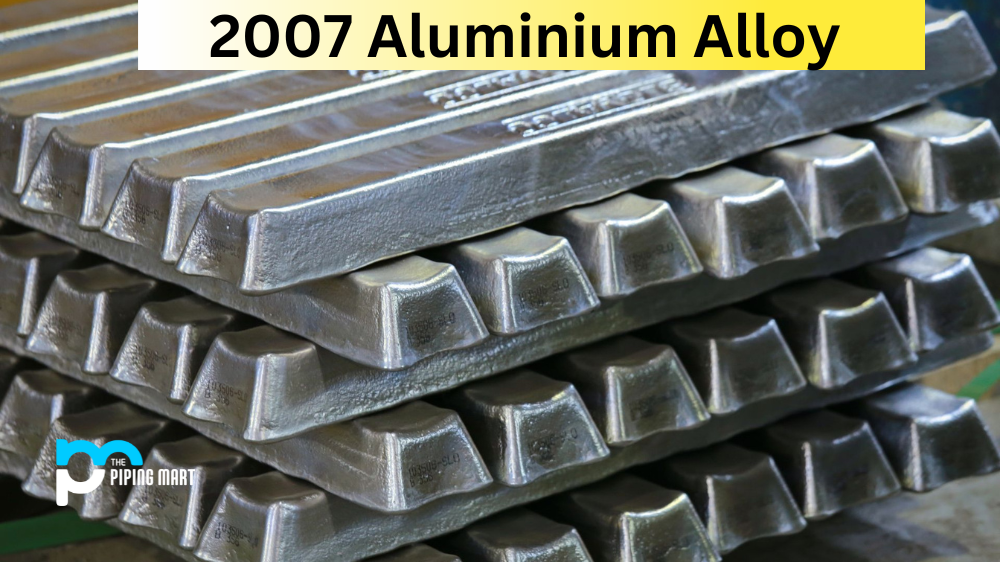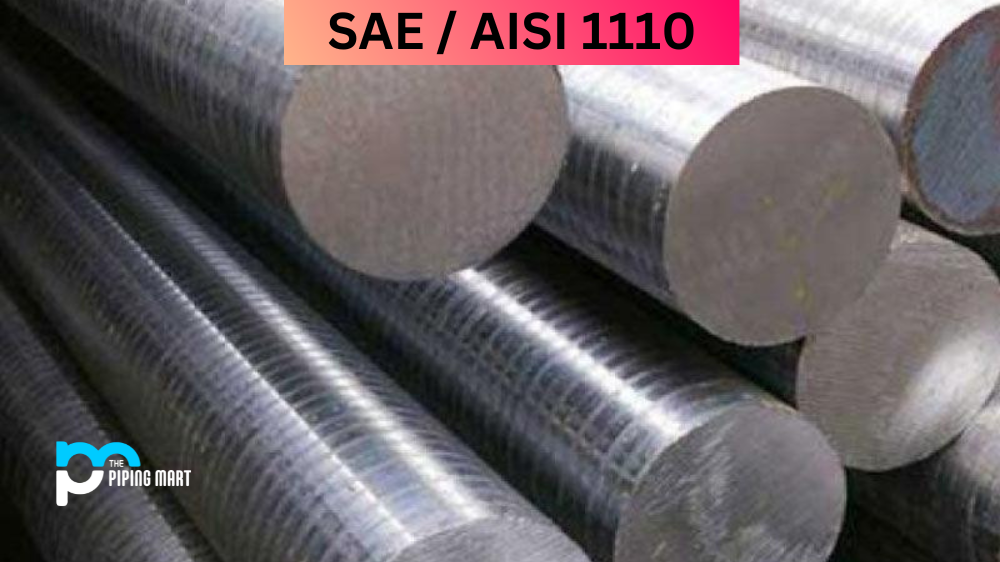Aluminium alloys are widely used in different industries due to their unique properties. They are lightweight, corrosion-resistant, and have excellent thermal and electrical conductivity. One of the most popular aluminium alloys is the 2007 aluminium alloy. This alloy is known for its excellent machinability, strength, and toughness. In this blog post, we’ll look in-depth at the composition of the 2007 aluminium alloy, its physical and mechanical properties, uses, hardness, heat treatment, welding, and corrosion resistance, to help you understand why it’s so popular among manufacturers.
2007 Aluminium Alloy Composition
The 2007 aluminium alloy is a member of the 2000 series of alloys and is composed mainly of copper and aluminium. It also contains small amounts of magnesium, manganese, silicon, iron, and zinc. The copper content in the alloy makes it highly machinable, while the other elements added to the composition result in improved strength and hardness.
| Si | Fe | Cu | Mn | Mg | Cr | Zn | Ti | Pb | Other elements |
| 0,8 | 0,8 | 3,3-4,6 | 0,5-1,0 | 0,4-1,8 | 0,1 | 0,8 | 0,2 | 0,8-1,5 | 0,15 |
2007 Aluminium Alloy Physical Properties
The 2007 aluminium alloy has a density of about 2.81 g/cm³, which is relatively low compared to other metals. It also has a melting point of around 566°C and a boiling point of about 1640°C. Its thermal conductivity is about 138W/(m·K), and its electrical conductivity is approximately 47% that of copper. These properties make the 2007 aluminium alloy perfect for various heat exchangers and electrical applications.
| PHYSICAL PROPERTIES | GENERAL PROPERTIES | ||
| (Guide values for 20° C) | |||
| Density of g/cm3 | 2,85 | Resistance to: | |
| Solidification range ° C | 507-650 | – Sea water | 5 |
| Electrical conductivity MS/m | 18-22 | – Weather conditions | 5 |
| Thermal conductivity W/(mK) | 130-160 | Hot formability | |
| Therm. linear expansion- | – extrusion presses | 4 | |
| Coeffizient 10-6/K | 23,0 | – Drop forging | – |
| Modulus of elasticity N/mm2 | 70.000 | – Open die forging | – |
2007 Aluminium Alloy Mechanical Properties
The 2007 aluminium alloy has excellent strength and toughness. Its tensile strength ranges from 340-500 MPa, while its yield strength ranges from 240-400 MPa, depending on the temper. The alloy also has excellent fatigue strength, making it suitable for high-stress applications.
| Condition | Measurement range | Tensile strength | Plug-in limit | Ultimate elongation | ||||
| in mm | Rm in MPa | Rp0,2 in MPa | in % (min.) | |||||
| over | up to | min | max | min | max | A50 | A | |
| Profile | 30 | 370 | – | 240 | – | 5 | 7 | |
| gez. T3 | 30 | 80 | 340 | – | 220 | – | – | 6 |
| Profile | 80 | 370 | – | 250 | – | 6 | 8 | |
| gep. T4 | 80 | 200 | 340 | – | 220 | – | 8 | |
2007 Aluminium Alloy Uses
The high machinability, strength, and toughness of the 2007 aluminium alloy make it ideal for use in different industries. It can be used to manufacture aircraft parts, automotive parts, electrical conductors, and heat exchangers. Its excellent strength and toughness also make it applicable in military applications.
2007 Aluminium Alloy Hardness
The hardness of the 2007 aluminium alloy varies depending on the temper. It can range from 80 to 140 on the Brinell hardness scale. This makes it relatively hard compared to other aluminium alloys, increasing its durability and wear and tear resistance.
2007 Aluminium Alloy Heat Treatment
The 2007 aluminium alloy can be heat-treated to improve its physical and mechanical properties. The process involves heating the alloy to a specific temperature and then rapidly cooling it to achieve a specific temper. The various tempers available are T3, T4, T6, and T8. The T6 temper has the highest tensile and yield strength, making it the most widely used.
2007 Aluminium Alloy Welding
The 2007 aluminium alloy can be easily welded using conventional welding methods, such as TIG and MIG welding. However, using flux-cored arc welding is not recommended due to the risk of weld defects. It’s also essential to use appropriate filler materials to ensure a high-quality weld.
2007 Aluminium Alloy Corrosion Resistance
The 2007 aluminium alloy has good corrosion resistance, particularly in marine environments. Its high copper content makes it resistant to saltwater corrosion and erosion. It’s also relatively corrosion-resistant to acids and alkalis. However, protecting the alloy from galvanic corrosion is essential by avoiding contact with other metals that can cause an electrolytic attack.
Conclusion:
The 2007 aluminium alloy is popular among manufacturers due to its excellent machinability, strength, and toughness. Its physical and mechanical properties and corrosion resistance make it suitable for use in different industries, from aerospace, automotive to military applications. It’s a versatile alloy that can also be heat-treated to achieve specific tempers, further improving its physical and mechanical properties. If you’re looking for an alloy that is durable, hard and meets specific performance standards, then the 2007 aluminium alloy might be the perfect choice.




